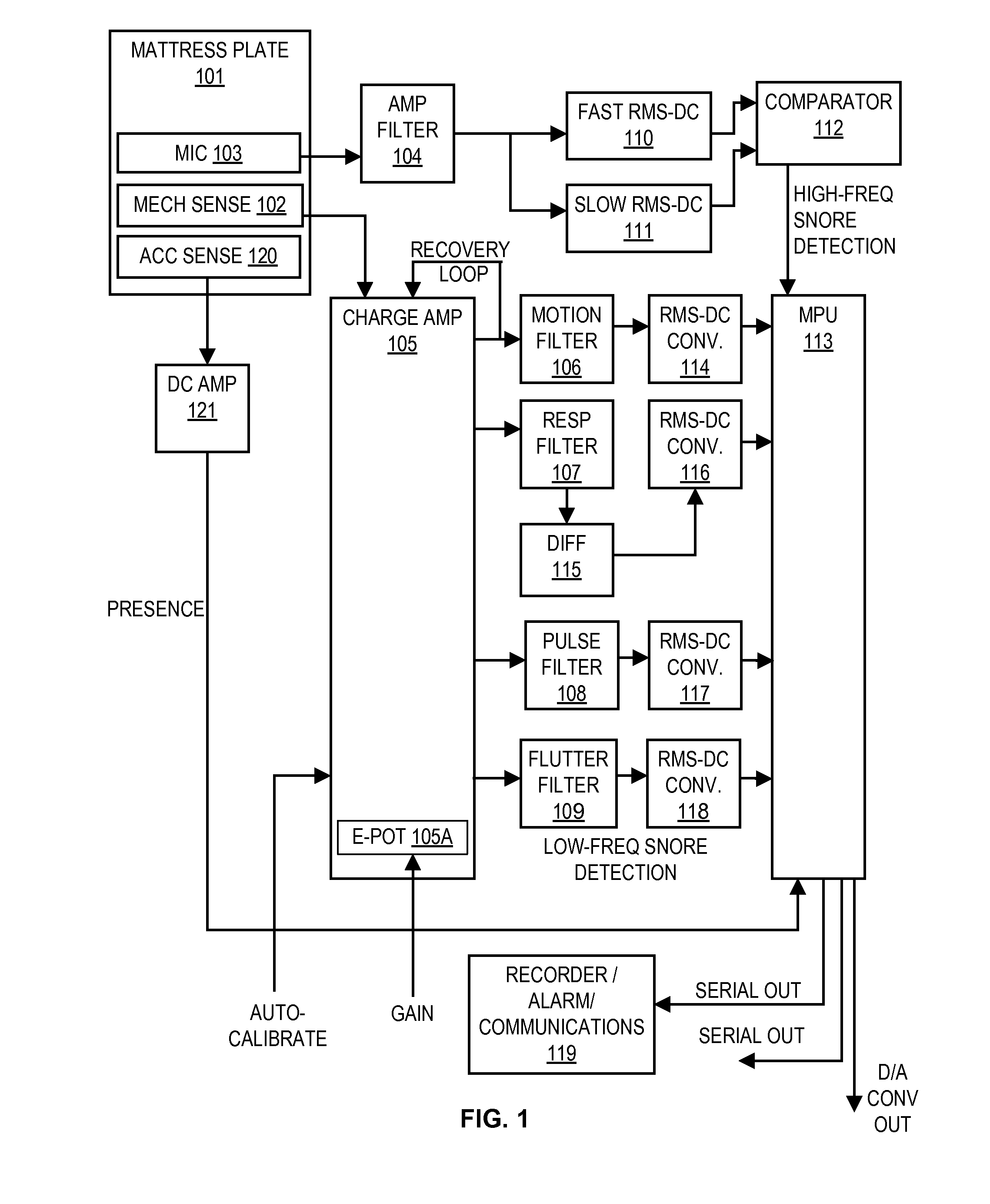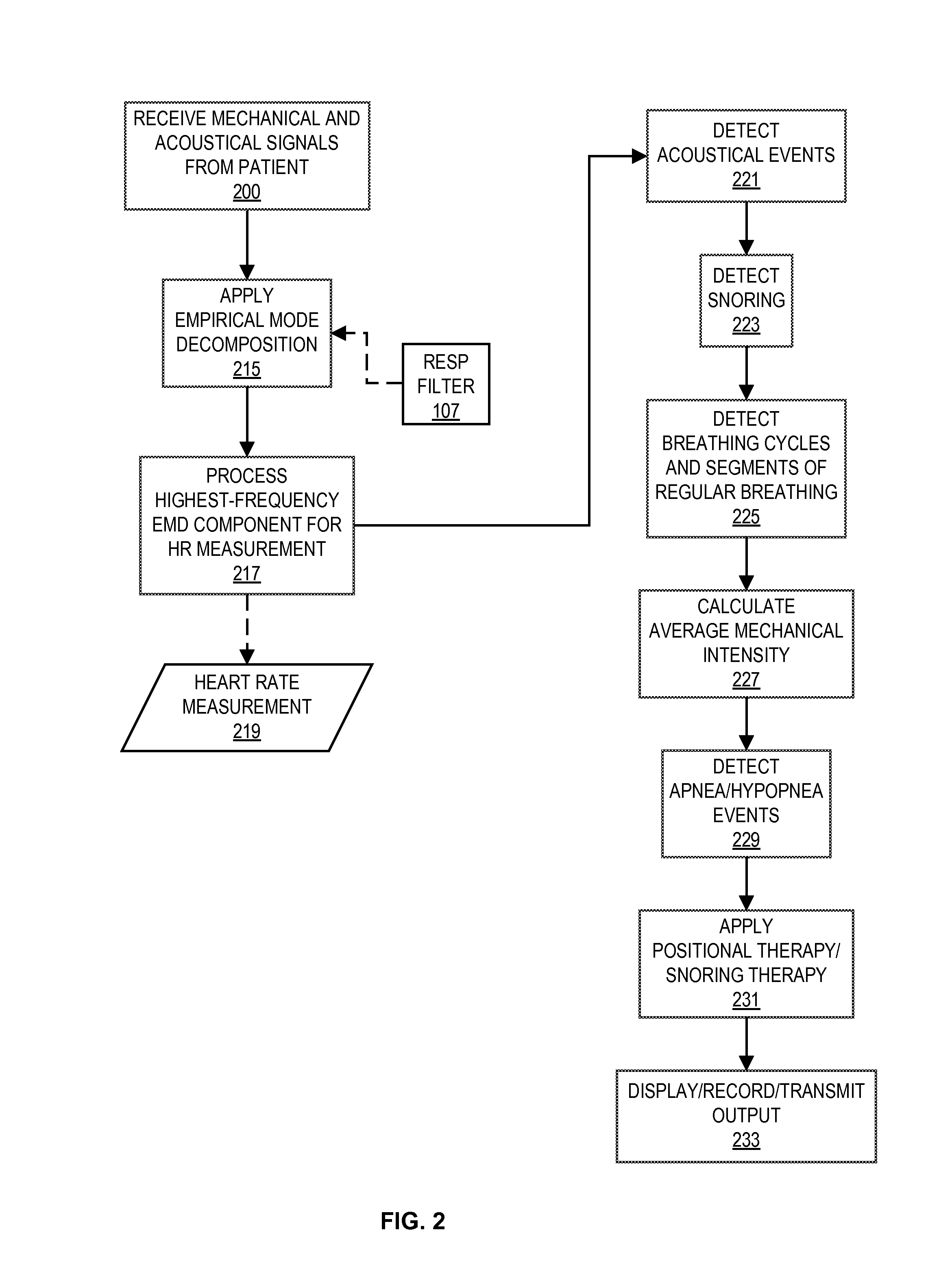Method for detecting and analyzing sleep-related apnea, hypopnea, body movements, and snoring with non-contact device
a non-contact device and sleep-related apnea technology, applied in the field of medical monitoring, can solve the problems of blockage of the airway, snoring is associated, and snoring also poses social problems
- Summary
- Abstract
- Description
- Claims
- Application Information
AI Technical Summary
Benefits of technology
Problems solved by technology
Method used
Image
Examples
Embodiment Construction
[0033]The principles and operation of a method and apparatus according to the present invention may be understood with reference to the drawings and the accompanying description.
Apparatus
[0034]An embodiment of the present invention for use in real-time monitoring is depicted in the block diagram of FIG. 1. A plate 101 is placed under a mattress which is flexibly-supported from a frame, such as by a network of springs. In certain embodiments, plate 101 is a robust plastic incorporating grooves for flexibility and increased sensitivity to strain. Plate 101 further includes one or more of the following sensors:[0035]A mechanical sensor 102 having an electrical output.[0036]In certain embodiments, mechanical sensor 102 is a receiving apparatus, such as a piezoelectric disc serving as a dynamic strain gauge capable of detecting vibrations of various origins, including respiration, cardio-ballistic pulse wave, body movements, and body flutter due to sub-audible, low-frequency snoring.[003...
PUM
 Login to View More
Login to View More Abstract
Description
Claims
Application Information
 Login to View More
Login to View More - R&D
- Intellectual Property
- Life Sciences
- Materials
- Tech Scout
- Unparalleled Data Quality
- Higher Quality Content
- 60% Fewer Hallucinations
Browse by: Latest US Patents, China's latest patents, Technical Efficacy Thesaurus, Application Domain, Technology Topic, Popular Technical Reports.
© 2025 PatSnap. All rights reserved.Legal|Privacy policy|Modern Slavery Act Transparency Statement|Sitemap|About US| Contact US: help@patsnap.com



